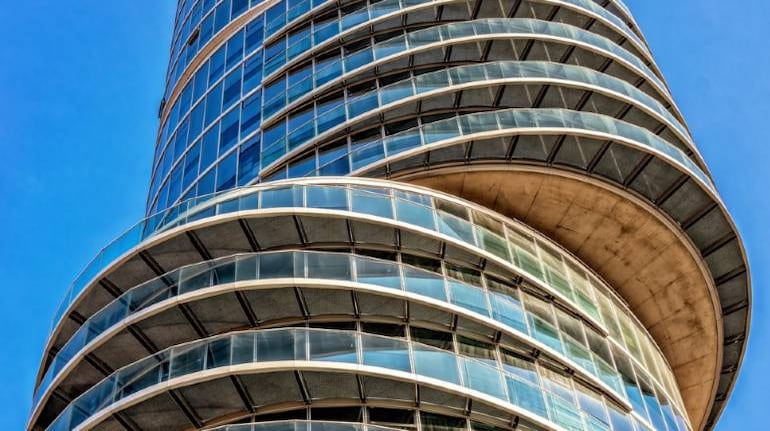The ask price across the board has fallen in the 10-15 percent range according to a poll of brokers.
In January 2020, a homebuyer put up a token amount of Rs 5 lakh to purchase an apartment that was to be transacted at Rs 6.75 crore in the luxurious Omkar 1973 project at Worli. As with most in real estate, the investor who had previously purchased the apartment at around Rs 13 crore lost his patience with falling prices and opted to cut his losses.
Then a small challenge occurred. The buyer who made the token amount had calculated a certain value for his own apartment to get sold first. That didn’t materialise. Thereafter COVID-19 struck and both sides in the prospective Omkar 1973 deal knew that it wasn’t going to happen and the token amount of Rs 5 lakh was returned.
A month later the investor gave a not so subtle hint that a transaction at even Rs 6 crore may work for him. At that price – the property is priced at Rs 30,000/sqft on carpet or 50 percent lower from the prices it once routinely attracted. I suspect it will see some demand once the lockdown and its hangover are settled.
The reason I cite this example is to announce something that is now being spoken in hushed tones by insiders of the industry: The fire sale in Mumbai’s premium real estate has begun and it will drive a sharp price fall in other segments of the industry as well.
Omkar 1973 is no aberration of a distressed seller on the block. Though it must be said that there is no other belt like Lower Parel / Worli belt where the unsold inventory of 17 projects alone aggregates to almost Rs 33,000 crore. (A chronicler will one day highlight developers in Lower Parel as having done the most incompetent planning and product development strategy in the history of Mumbai real estate).
Karl Nagarwalla of Nagarwalla Estates, a luxury real estate broker in South and Central Mumbai, says “Transacted prices in prominent neighbourhoods of Mumbai have already fallen by 25-30 percent over the last two years. In pockets like Lower Parel, prices have fallen almost 40 percent from their peak.”
Also Read: Enough of the Khans, Mumbai real estate needs to find its Ayushmann Khurrana
The ask price has further fallen 10-15 percent for luxury residences in Central Mumbai post COVID-19 according to a report by Kunal Lakhan of CLSA.
This phenomenon isn’t restricted only towards that small pocket. New constructions in tony residences like Bandra as well as Western Suburbs, Central suburbs are seeing a similar price trajectory. While currently, the pricing is coming under pressure only in new constructions, it is only a matter of time that this pricing gets normalised across a particular locality.
Old construction in previously buzzing locations like Cuffe Parade and Colaba has never recovered ever since T. Chandrashekhar built the magnificent Central Business District of Bandra-Kurla-Complex and changed the commercial landscape of the city.
With COVID-19, prices in that location have taken a further beating. The ask price across the board has fallen in the 10-15 percent range according to a poll of brokers who did not wish to be quoted.
Unlike previous times when prices rose along with increased construction, today, as the project completion date comes closer, the pressure on prices is heavier. Desperation from the developer sets in as he tries to clear his inventory – in most cases through discrete means.
With that trend in mind, it means we are only in the beginning of a uniform downturn in prices for all types of apartments including premium and luxury ones. Data from Zapkey, a real estate intelligence platform, says 4,788 towers in MMR have sold less than 40 percent of their inventory and they are scheduled for possession in 2020/21. Given that there are 24,105 towers listed on RERA, it means 20 percent of all new construction is in the vulnerable territory. This includes all types of towers including premium and luxury.
Also Read: Coronavirus will do what everything else couldn’t: Crash Mumbai real estate prices
The biggest competition to developers often is from their existing investors for projects that are in advanced stages of completion. Investors are slashing expectations candidly while developers are doing it insidiously.
Currently, at a cosmetic level, prices in the resale market are often quoted at a 10-15 percent discount to the levels sought by the developer. In an efficient market with reasonable demand and supply, both have to converge. One has to be naïve to bet on the fact that the rate quoted by the investors will rise to the levels of developers – in all likelihood it will be the developer’s rate falling to the levels of the investor.
I understand the complications with developers slashing their prices significantly in public but this strategy leaves very few cards on the table for them. Sale transactions get executed by investors while the developer inventory remains at inflated levels. Playing only for bulk transactions is a high-risk strategy and it has yielded poor results. In times of survival – don’t let pride and reputation come in the way.
Will these quoted prices materialise into transactions? In my view – a modest number certainly will as prices are now reaching attractive levels for an investor as well as end-user. A significant number, however, will prefer a wait and watch approach even once the uncertainty has tapered off.
Will there be a smart recovery for the segment? No, the unsold inventory pool of 110,000 units in Greater Mumbai is too massive for a meaningful absorption.
The fire sale has just begun.
When not busy with his newstoon platform Snapnews, Vishal Bhargava is a real estate enthusiast who views and reviews new projects. The views are personal.Special Offer: Subscribe to Moneycontrol PRO’s annual plan for ₹1/- per day for the first year and claim exclusive benefits worth ₹20,000. Coupon code: PRO365














